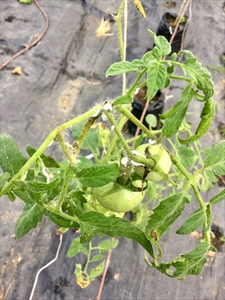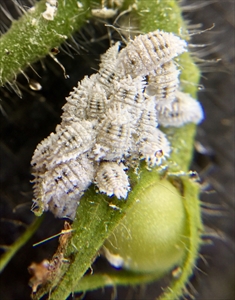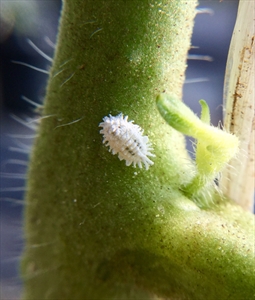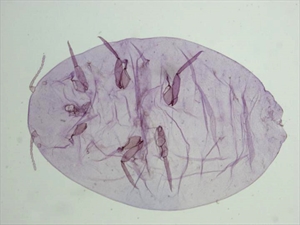- Worldwide distribution. Recorded from Australia and Fiji. Over 200 hosts: cotton, okra, papaya, potato family, and weeds. Above and below ground.
- Damage, direct: adults and nymphs suck sap. Leaves yellow, plants become stunted, flowers and fruits fall; indirect damage from dark mould growth over leaves from deposits of mealybug honeydew.
- Eggs, laid into ovisac, develop into crawlers, then adults covered in powdery wax. Females with spots on top, and 18 waxy filaments at margins. Males mosquito-like but no mouths.
- Spread by crawlers carried in wind, birds, clothing, machinery. Movement of nursery stock.
- Natural enemies: ladybird beetles, and many wasp parasitoids.
- Cultural control: (i) nursery - weed; check plants, (ii) field - remove volunteer plants and weeds; avoid overlapping crops; handpick or prune infested leaves; hot water to destroy ant nests (plants will tolerate up to 49°C); collect and burn debris after harvest.
- Chemical control: use soap solution, horticultural or white oils (see Fact Sheet no. 56). Avoid synthetic pesticides; only use e.g., synthetic pyrethroids to kill ants.









